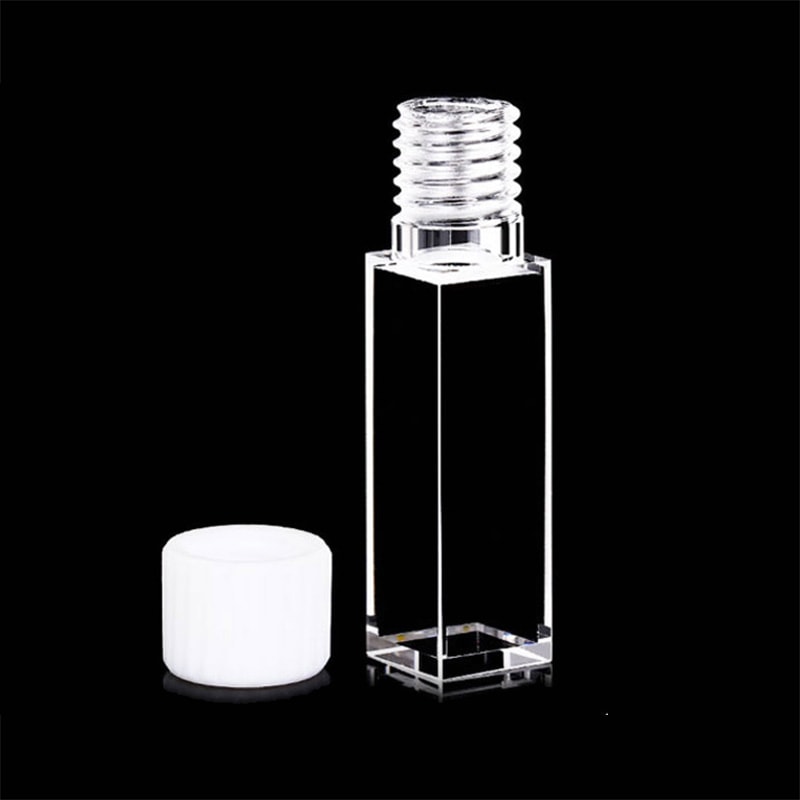Spectrophotometry is an essential element of scientific discovery it is a method to unravel the secrets of light absorption and transmittance across particular wavelengths. Its core is the cuvette which is a modest but critical vessel that holds samples to be analysed. The cuvette is a tiny container, which may appear to be unassuming, but its design includes the length of the path, and the selection of the materials used are essential to obtain accurate details on concentration and purity. We’ll explore this fascinating world that reveals how cuvette dimensions as well as dimensions influence the results of every study.
The Power of Cuvette Path Length
Imagine the beam of light passing through a liquid. The result is dependent on the size of the cuvette or the distance over which light travels. A standard 1 cm path length cuvette is usually used by many labs, striking a balance between sensitiveness and practicality. Why does this matter? The longer the distance, the more light is absorption and amplifies the signal in weak samples. A shorter path could make a big difference for highly concentrated solutions, such as proteins or nucleic acids. It decreases the requirement for dilution, while also preserving precious samples and cutting down the time needed to prepare. What’s the lesson to be learned? Matching the path length to sample requirements is not obvious and increases reliability.

Image credit: cuvet.co
Cuvette Dimensions The Look at more than what meets the Eye
Size of the cuvette doesn’t simply refer to how much liquid is contained inside. It’s also about how the vessel is used by the spectrophotometer. Cuvettes come in range of sizes and shapes which are suited to particular job. For example semi-micro cuvettes with smaller dimensions and more robust walls tackle tiny sample volumes that could be a few microliters an uncommon biological extract. Thicker walls shrink the space inside, allowing light to flow through a condensed sample, without wasting a drop. Compare this to a standard cuvette, the difference is stark less pipetting steps and less chance of error and results that stand up under scrutiny. It’s a clever modification that makes it clear that size isn’t just an quantity, but a strategy.
The 1 cm length of the Path Cube is a Lab Favorite
Why does the 1 cm path length cuvette reign supreme in so many experiments? It’s ideal to measure biological parameters when samples are scarce and milliliters count. This standard design offers an even measurement of absorbance without overburdening the detector. It’s not the ideal choice for all scenarios. There’s no one size fits all hero. It is crucial to select the right tool, and not the one that you are comfortable with. A wrong cuvette can be compared to an un tuned instrument.
Material Matters: Beyond Path and Size
Cuvette dimensions are only half of the story. The choice of the material is the final element. Glass and quartz cuvettes shine for their high transmission rates which allow light to pass through with little interference. They are durable and reusable. This makes them suitable for spectroscopy. On the other hand, plastic cuvettes offer affordability and convenience. They can be used and thrown away. There’s no need to wash or clean up after, and no risk of cross contamination. If you’re looking for aqueous solutions or fast DNA and RNA tests, they’re tough to beat. The cost? A lower level of accuracy for certain wavelengths. It’s a classic case of objectively dictating the preference for quartz for the purist, plastic for the pragmatic.
Accuracy in Practice
The great thing about cuvettes is in their ability to adapt. Shorter lengths of path options with spacers can handle concentrated samples with finesse, while larger vessels can handle bigger volume. Each path length, size and material will ripple through the lab and affects the clarity of the outcomes. Consider a lab measuring a rare protein: Semi-micro cuvettes with the shortest path can avoid the hassle of dilution, and can provide reliable data fast. Compare that to a slow change of cuvettes during the experiment, and the results are shaky. The smallest of details can have the greatest impact on spectrophotometry.
Cuvettes aren’t huge, yet they play a big role. They range from the 1 cm cuvette path length to customized dimensions are able to connect the sample and the insight. If you’re seeking quality or concentration, the right cuvette turns an accurate measurement into a great one-of-a-kind proof of the fact that precision in science begins with the instruments at disposal.